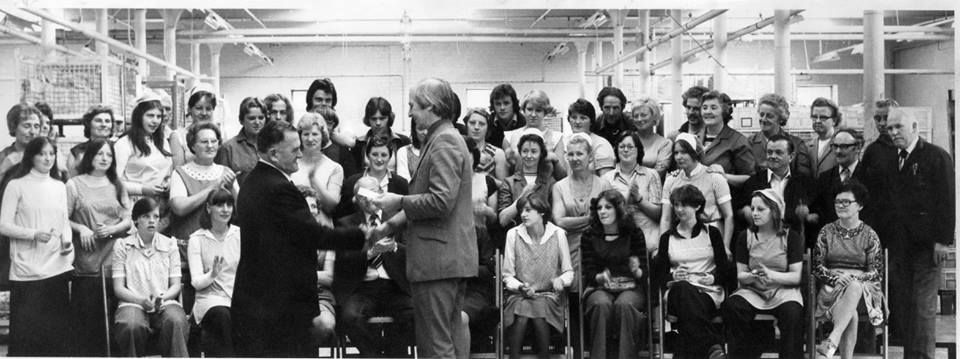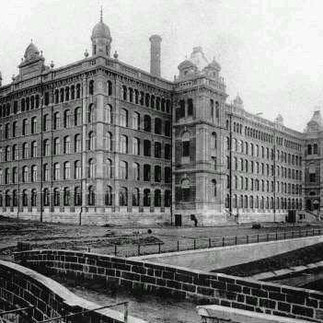The Paisley Mill Lassies: Weaving the Fabric of Industrial Heritage
- Gavin Divers
- Aug 16, 2024
- 5 min read
The town of Paisley, located in Renfrewshire, Scotland, is renowned for its rich textile history, particularly in the production of the iconic Paisley shawl. Central to this legacy are the Mill Lassies—young women who laboured tirelessly in Paisley's textile mills during the 18th and 19th centuries. These women played a pivotal role in the town's economic development, contributing to the global recognition of Paisley as a hub of textile innovation. This article delves into the lives, struggles, and legacy of the Paisley Mill Lassies, offering a comprehensive look at their contributions to both local and global history.
The Rise of the Textile Industry in Paisley
Paisley's transformation from a small town to a bustling industrial centre began in the late 18th century. The introduction of mechanised weaving looms and other advancements in textile production marked the beginning of a new era. The town became synonymous with the production of shawls, particularly those featuring the distinctive teardrop pattern known as the "Paisley pattern," which had origins in the East but was popularised and perfected in Paisley.
The demand for these shawls, both domestically and internationally, led to a boom in the local textile industry. By the early 19th century, Paisley was home to numerous mills, employing thousands of workers, the majority of whom were women— the Paisley Mill Lassies.

Life in the Mills: A Day in the Life of a Paisley Mill Lassie
The life of a Mill Lassie was far from easy. Workdays often began before dawn and lasted 12 to 14 hours, with only short breaks for meals. The mills were noisy, hot, and dangerous, with little regard for worker safety. Mill Lassies were tasked with operating looms, spinning machines, and other equipment, requiring both skill and endurance.
Despite the harsh conditions, the camaraderie among the Mill Lassies was strong. Many women began working in the mills as young as 10 or 12 years old, and the older workers often took on a mentoring role, helping the younger ones adapt to the demanding environment. Songs, stories, and shared experiences helped to forge bonds that provided emotional support in the face of difficult working conditions.

Economic Contribution and Financial Independence
The wages earned by the Mill Lassies, though meagre, were a crucial source of income for their families. In many cases, these women were the primary breadwinners, particularly in households where the male members were unemployed or earning less. The textile industry provided them with a degree of financial independence that was rare for women of their time.
However, the pay was often unequal, with women earning significantly less than men, even when performing similar tasks. This wage disparity was a common grievance among the Mill Lassies and one that would later contribute to the rise of labour movements and strikes within the industry.

Health Risks and Working Conditions
The working conditions in Paisley's mills were notoriously hazardous. The constant exposure to cotton dust and other fibres led to respiratory issues such as "mill fever," a condition akin to chronic bronchitis. The lack of ventilation in the mills exacerbated these health problems. Additionally, the loud noise from machinery caused hearing loss, and the close proximity to dangerous equipment resulted in frequent accidents, sometimes leading to severe injuries or even death.
Despite these risks, there was little in the way of health and safety regulations. It wasn't until the latter half of the 19th century that factory acts began to be implemented, slowly improving conditions for workers. However, these reforms were often too little and too late for many Mill Lassies who had spent years working in harmful environments.

Cultural and Social Influence
The Paisley Mill Lassies were not just workers; they were integral members of the community. Their influence extended beyond the mills and into the social and cultural fabric of Paisley. The women developed a strong sense of identity and community, often centred around their shared experiences in the mills. This collective identity was reflected in the local culture, influencing everything from dialect to fashion.
The Mill Lassies also played a role in the evolution of working-class fashion. Their practical, durable clothing was designed to withstand the rigours of mill work while still allowing for a degree of personal expression. The distinctive headscarves, known as "Paisley shawls," became a symbol of their identity, blending functionality with the rich textile traditions of the town.

Labour Movements and Strikes
The harsh working conditions and wage disparities eventually led the Paisley Mill Lassies to organise and fight for their rights. Throughout the 19th century, there were several significant strikes and protests led by the Mill Lassies, often in conjunction with their male counterparts. These actions were some of the early examples of organised labour in Scotland and played a role in the broader labour movement that swept through the UK during the Industrial Revolution.
One notable event was the "Paisley Weavers' Strike" of 1828, in which many Mill Lassies participated. The strike was a response to wage cuts and poor working conditions and marked a turning point in the labour movement in Paisley. Though the immediate results of the strike were mixed, it set the stage for future labour reforms and highlighted the growing discontent among textile workers.

Technological Changes and Their Impact
As the 19th century progressed, advances in technology began to change the nature of work in Paisley's mills. The introduction of more advanced machinery reduced the need for skilled labour, which in turn affected the roles of the Mill Lassies. Many found themselves displaced by machines, while others were forced to adapt to new roles that required less skill but offered lower pay.
These changes were not without their challenges. The transition to more automated processes often led to job losses and increased pressure on those who remained employed. For the Mill Lassies, this period was marked by uncertainty and a struggle to maintain their livelihoods in the face of rapid industrialisation.

Legacy and Memorialisation
The legacy of the Paisley Mill Lassies is still evident in the town today. While the textile industry has largely disappeared, the impact of these women on Paisley's history remains significant. Several monuments and memorials in Paisley pay tribute to the Mill Lassies, recognising their contributions to the town's industrial heritage.
One notable example is the statue of the "Mill Girl" in Paisley, which honours the women who worked in the mills and contributed to the town's global reputation as a centre of textile production. Additionally, former mills in Paisley have been preserved as heritage sites, with exhibitions and tours that tell the story of the Mill Lassies and their role in the town's history.

Preservation of Historical Sites
Efforts to preserve Paisley's industrial heritage have resulted in the restoration and conservation of several key sites associated with the Mill Lassies. These include the Anchor Mills, once one of the largest thread-making factories in the world, and now a mixed-use development that includes a museum dedicated to Paisley's textile history.
The preservation of these sites ensures that the story of the Mill Lassies continues to be told, allowing future generations to understand the vital role these women played in the development of Paisley and the broader industrial history of Scotland.
Conclusion
The story of the Paisley Mill Lassies is one of resilience, determination, and significant contribution to both local and global history. These women were not only the backbone of Paisley's textile industry but also pioneers in the fight for workers' rights and gender equality. Their legacy lives on in the town's cultural memory, its preserved industrial sites, and the ongoing recognition of their role in shaping Paisley's identity. Through the images and stories preserved from this era, we can continue to honour the Mill Lassies and their indelible impact on the fabric of industrial heritage.

















































Yorumlar